The line between an "extreme feat" and an "extreme sport" can seem thin on paper. But in action, you know a feat when you see one.
So what's the difference? A sport is a human construction; a feat is a human choice. A feat is doing what the rest of us already do—swim, walk, exercise, hold your breath—but taking it to unimaginable lengths. Watching a feat on a YouTube video, you feel your skin crawl. Humans just aren't supposed to do that, or go there.
If there is a defining trend among the activities listed here—aside from danger—it is a focus on endurance, and a near total lack of artifice and complexity. They are all familiar activities rather than overtly conceptual ones (sorry, record-setting penile weightlifters and en fuego runners), and they don't require millions of dollars of gear or immense support staffs (this means you, Felix Baumgartner). There's not even a bicycle among them.
You could do any of them right now, if you only made the choice. So what are you waiting for?
See that mountain over there? That one—over on the horizon. Go climb it. Don't bring any gear or hiking boots. Don't even drive to the trailhead. Just take off from here.
Mountain running—also known as fell running in the U.K., and sky running—has been around informally for years, but has exploded in popularity in the last decade. Runners like the Catalan Kilian Jornet make headlines for setting speed-ascent records on the Grand Teton and Kilimanjaro, but it is outside of the record books, in these runners' day-to-day training, where the real feats lie. American trail racer Anton Krupicka, for one example, ran up 8,144-foot Green Mountain from his nearby hometown of Boulder, Colorado, an incredible 296 times in 2010.
Jornet gives credit to Italian Bruno Brunod for envisioning the simple charm of mountain running back in the 1990s. "Bruno was the first to see the mountain in that way: to leave town, climb all the way to the summit, and come down as fast as possible," he says. "It's pure mountain and pure running." Unlike the tight, insect-like forms of rock climbers, mountain runners skitter up steep faces like goats and bound down in a cloud of waving arms.
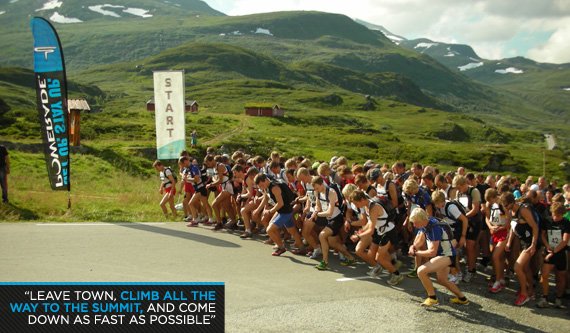
Looking to make a race out of it? You have ample choices. The Ultra Cavalls del Vent in the Spanish Pyrenees features more than 19,000 feet of vertical gain across a jagged 52-mile course. Most American states have their own iteration, beginning and ending in the downtown of a resort town.
And then there's Badwater. This 135-mile race starts at the lowest point in the contiguous United States, Badwater Basin in Death Valley (-282 ft) and climbs to a point 8,360 high on the flanks of Mount Whitney. The original course went all the way to the summit at 14,505 feet; many runners still go all the way there. Oh, and the race takes place in July, when the surface of the highway in Death Valley is hot enough to melt the soles of running shoes.
Why climb a building? Because, it's fun, and/or to be a jerk. Need another reason? The famed early British alpinist Geoffrey Winthrop Young is happy to give it:
"Since the supply of unconquered Alps is limited and the dangers of Nature's monumental exercise grounds are yearly increased by the polish of frequent feet and the broken bottles of thirsty souls, aspirants with the true faith at heart have been forced of late years to seek new sensations on the artificial erections of man."
Young's expression of the "true faith" came in the form of The Roof-Climber's Guide To Trinity, a tongue-in-cheek reference work published anonymously in 1895 for his fellow Trinity College students who aspired to ascend the campus' centuries-old spires and chapels. Ten years later, he followed it up with the equally flowery, classics-quoting general guide Wall and Roof Climbing, still widely available online.
By the 1930s, Cambridge-climbing had developed enough cachet to garner a guide put out by the mainstream London publisher Chatto & Windus. However, the book's title, The Night Climbers of Cambridge, and the author's pseudonym of "Whipplesnaith," show that the naughtiness factor was still front and center.
In the ensuing decades, dozens of amateur climbers have lived—and died—in devotion of buildering, a portmanteau of "bouldering" (climbing on boulders) and "building." Long the realm of specialists who climbed with the expectation of being arrested on the top floor, urban climbing has crawled toward the mainstream in recent years. In 2004, legendary builderer Alain "The French Spiderman" Robert climbed Tapei 101, then the tallest building in the world, as part of the official opening of the building.
The night climbers of Cambridge rolled in their graves.

So you've buildered your town backward and forward. Now what? It may sound quaint, but you could climb one of those primitive earth-buildings, also known as rocks. But just to keep out the wimps, you can only climb the most difficult and lengthy routes on the most terrifying rock faces, and no safety gear is allowed.
If you're already packing up your gorp, you might just be Alex Honnold. Hi, Alex. If you're not Alex Honnold, then consider staying at home.
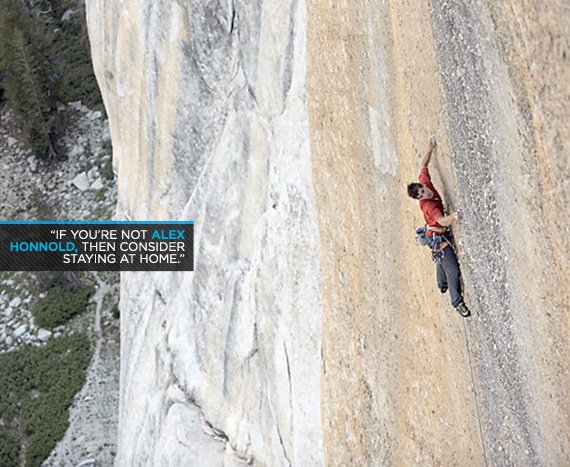
Honnold, 27, is an American climber who has the market cornered when it comes to speed and simplicity. In recent years, he has climbed Half Dome and El Capitan in Yosemite National Park—routes that take teams of seasoned climbers several days—in less time than it takes to watch The Dark Knight Rises. In both cases, his only gear was climbing shoes and a chalk bag—and he forgot the latter while setting the speed record on the Nose route of El Cap, as the New York Times relayed in a breathless account.
OK, free divers don't so much "sink" as willfully descend and ascend from great depths. But watch a video of William Trubridge free-diving a 30-meter underwater arch in the Red Sea, or a Bajau fisherman spearfishing on a single minutes-long breath, and try to avoid the conclusion that they are sinking—and you with them.
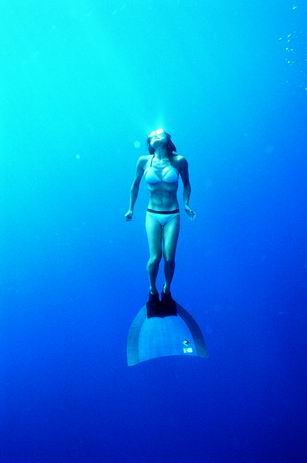
It shouldn't be possible. Yet, human beings can actually survive for longer without oxygen in deep, cold water than we can on land, thanks to an involuntary mechanism known as the mammalian diving reflex. Like otters, seals, and other deep divers, our heart rate slows dramatically when we are immersed in water. Go a little deeper, and the blood vessels shrink and blood stops circulating in the extremities, leaving more for the brain and heart.
Go really deep—around 30 meters deep and lower—and something even more amazing happens. Blood plasma fills the alveoli, as well as the blood vessels in your lungs and thoracic cavity, keeping your organs from being crushed by the overwhelming pressure.
If any of this sounds familiar, it's likely because magician David Blaine formally introduced the mammalian diving reflex to the mainstream media in 2008. As the culmination of a stunt where he spent eight days living in an 8-foot-wide water-filled globe in front of Lincoln Center, Blaine attempted unsuccessfully to break free diver Tom Sietas' then-world breath-holding record of 8 minutes, 58 seconds. He didn't succeed and had to be rescued just over the seven-minute mark.
Maybe he just wasn't deep enough. [Editor's note: Blaine later held his breath for over 17 minutes on The Oprah Winfrey Show after consuming pure oxygen for 23 minutes beforehand. This type of breath-holding is known as "oxygen-assisted static apnea," and it allows for much longer periods of submersion than unassisted static apnea.]
Of course humans can walk interminable distances. We didn't migrate from Ethiopia to Saskatoon on Segways, after all. But even when viewed through the lens of history, Jesse Castañeda's walking adventures qualify as "feat."
Castañeda grew up in remote Mexico, the son of a Tarahumara Indian, a tribe now world-renowned for their long-distance running abilities. At age 8, he was struck by a car and was told by three doctors that he would never walk again. "Finally a fourth came and told me, 'Follow my advice and believe," Castañeda told Sports Illustrated years later. "If you believe you can, you can."
After moving to the United States as a teenager, Castañeda threw himself into fitness, becoming a soccer coach and leading health and exercise clinics in New Mexico. In the 1970s, he also cemented his legend as the king of the cross-country stroll.
In 1973, he set the nonstop walking record of 302 miles, accomplished in 102 hours on a quarter-mile track, with hallucinations aplenty. But his specialty was schlepping overland. In 1982, Castañeda walked from the United Nations building in New York City to Venice, California, averaging 35 miles per day over four-and-a-half months with an American flag sticking out of his backpack. Along the way, he was attacked by animals, almost run over multiple times, and was arrested for unpaid child support in Colorado.
How did he make it? Simple: "I follow horizon after horizon," he said. "I play a little game with myself. I say, 'I'm going to catch it.' Then later I again say, 'I'm going to catch it.'"
The question isn't so much, "Why swim across the ocean," as "How can any of us resist the urge?" Earlier this year, a 34-year-old British vacationer heard the call and took off westward from a beach in the south of France, telling friends he was going to "carry the Olympic spirit across the Atlantic." He made it a few hundred yards before he was picked up by a rescue helicopter.
French long-distance swimmer Benoît Lecomte fared better in 1998 when he took the same trip from the opposite direction: Hyannis, Massachusetts, to Quiberon in Brittany. The trip took 73 days all told, with an electromagnetic field protecting Lecomte from curious sea fauna, including a great white shark that followed him for five days. Lecomte has since announced plans to give the mighty Pacific the same treatment and broadcast his journey live on TV and Facebook.
Because of the irregular geometry of oceans, there is no officially-accepted definition of what swimming across one means, and most attempts are plagued by suspicion. After 56-year-old American endurance athlete Jennifer Figge accomplished several large sections of the Atlantic in 2009, she claimed the entire ocean was unfeasible, despite the fact that Lecomte claimed to have done it a decade earlier. "Nobody could swim across the Atlantic. It's physically impossible," her manager said at the time. "It would take literally years."
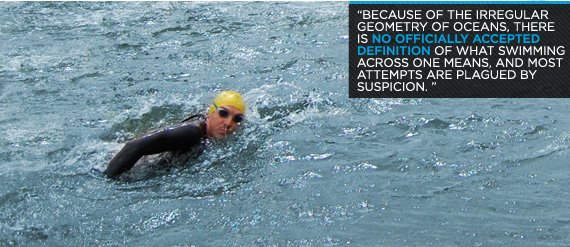
And yet people continue to try. The latest aspirant is British TV presenter Ben Fogle, who plans to swim from the United States to Cornwall in under 100 days sometime next year. His young children are none too thrilled about it, Fogle told the Telegraph. "Every time I leave they say, 'Don't go, Daddy'—and that's when I'm only going out for the milk," he said.
Distance just doesn't have the power to inspire fear and awe that it once did. Today, ultramarathons of 100 miles and upward abound on all continents—including Antarctica.
Likewise, running feats by both men and women have become so commonplace that they must border on the absurd to garner even meager coverage. American Dean Karnazes ran 350 miles non-stop, not long after running 50 marathons in 50 states in 50 days. Brit Lizzy Hawker ran from Mt. Everest's base camp to the Nepalese capital of Kathmandu, 187 miles with more than 32,000 feet of elevation gain, in little more than three days.
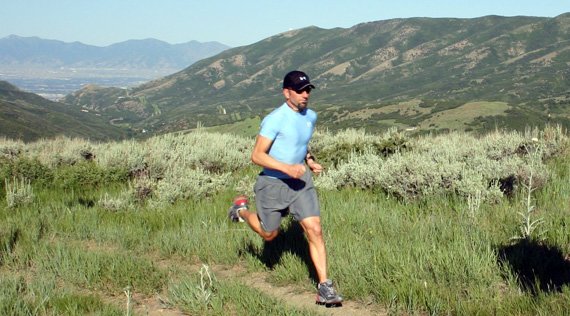
All of this makes the Self-Transcendence 3,100-Mile Race (that's really its name) even more special. To call this annual event in Queens, New York, a "race" is a stretch; it's more like an unending jog around purgatory. The course loops around a single city block spanning 164th Place to 84th Avenue, then left on 168th Street, left on Grand Central Parkway, and you guessed it, left again on 84th. Along the way, it passes an asphalt playground and Thomas Edison High School ... 5,649 times.
To conquer the full 3,100 miles in the requisite 52 days, runners have to average an ultramarathon-distance of 60 miles every day. For their accomplishment, they receive ... self-transcendence. What, you expected cash? Feeling good was prize enough for Suprabha Beckjord, who completed the race 12 years in a row before hanging up her shoes at age 53.
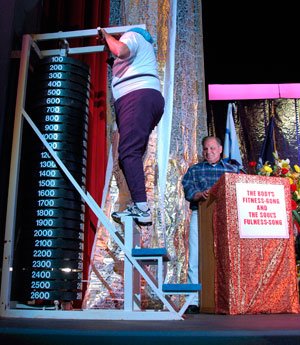
Who could think up something as bizarre and grueling as the Self-Transcendence Race? It could only be the late spiritual guru Sri Chinmoy.
After coming west in 1964, this Bengali-born spiritual leader cultivated a unique type of celebrity, based partly on his enclave of well-known disciples, and partly on the superhuman athletic achievements he achieved well into his 70s. Amazingly, the epic race in Queens is one of his least-known triumphs.
Chinmoy took up weightlifting at age 54 in 1985, but he without doubt lifted the best-known weights of anyone in history. Among those he hoisted were Nelson Mandela, Muhammad Ali, 20 Nobel laureates, and all manner of politicians and celebrities. Aside from lifting the famous, he also accomplished epic standing of cars, airplanes, and a 3,600-pound full-grown elephant to promote peace.
Naturally, the guru's combination of weight and showmanship had many nonbelievers. But among his stalwart supporters were the powerlifter Hugo Girard, Olympian Carl Lewis, and two former Mr. Universes, Frank Zane and Bill Pearl, the latter of whom often acted as MC at Chinmoy's exhibitions.
Is fasting an athletic feat? When taken beyond the hobby-hunger level, it clearly imparts most of the physical and mental punishments of the other endurance events: pain, hallucinations, catabolic self-cannibalism, boredom, and an overwhelming urge to stop. Add in the 19th century medical establishment's conviction that humans would inevitably die after 10 days with food, and the stage for a spectacle was set.
Dr. Henry Tanner brought the epic fast onto the American cultural radar in 1880, but his initial goal wasn't to teach or inspire. Tanner had explored the health benefits of weeklong fasts during the 1870s, but after his wife left him, he decided to extend his longest fast by three days and "rest from physical suffering in the arms of death."
Instead, he found that his asthma and rheumatism disappeared after 10 days, so he extended his fast by another 31 days. Three years later, he staged another 40-day fast at Clarendon Hall in New York City, breaking it in front of thousands of gawkers by eating a peach, drinking a glass of rice milk, and then downing a roasted beefsteak and a half-pound of sirloin.
In the years since what the New York Times called "Tanner's folly," fasts of a week or more have become a common health and cleansing technique, as well as showing promise as part of cancer treatments. Hunger strikes, which date back centuries, have also played prominent roles in modern political conflicts in India, Ireland, Cuba, among other instances. Some protesters have lasted upward of 90 days without food, but Tanner's original goal of 40 remains a valuable benchmark for any aspiring hunger artist wanting to test their mettle and horrify loved ones.
In 2003, David Blaine (who else?) brought the feat back to the global lens when he fasted for 44 days in a dangling glass cube over the River Thames in London. Reverent British audiences responded by pelting the cube with sausages and sending up a floating hamburger attached to a remote control helicopter.
So you think body weight exercises are just for gymnasts and the weight-room-phobic? Perhaps you need to stop thinking in terms of sets, and start thinking in terms of revolutions of the earth.
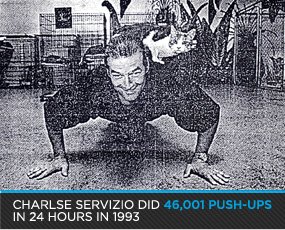
Like sit-ups? Do 100,000 in a day, and you're still almost 11,000 away from the one-day record. Push-ups? Charles Servizio did 46,001 in 24 hours in 1993. That last one was a killer.
Let's talk pull-ups. Stephen Hyland did 4,020 in one clock-spin in 2011, which sounds like a far more approachable number. Navy Seal and ultramarathon runner David Goggins set his eyes on it last October, using a bar in a shaky frame on the set of the Today show. Alas, just five-and-a-half hours and 2,588 pull-ups into the ordeal, Goggins felt something snap in his right wrist. Some sources alleged that bulging tissue actually burst through the skin.
In either case, he was toast, and the record still stands. So go for it, but be warned: All the pre-workout supplements in the world won't help you now.

